I started off the morning mountain biking to Tobacco Creek then to East Park Boundary nest box sites. The morning was cold, 38 degrees, but warmed up to 64 degrees by afternoon. At the main trail intersection to Tobacco Creek I heard a Golden-cheeked Warbler singing. The highlight at Tobacco Creek was a Sharp-shinned Hawk scaring up a flock of 35 Cedar Waxwings along the river. The waxwings then proceeded to chase the hawk out of sight. A Yellow-bellied Sapsucker was sited after I followed its tapping's to a large deciduous tree up the hill from nest box 5. This species is the only eastern woodpecker to be completely migratory. It has the habit of making horizontal holes, all in a row, in young bark of a tree. This causes the tree to weep sap which the sapsucker eats.
At East Park Boundary, a Red-shouldered Hawk took flight from a perch on the opposite side of the river. At both Tobacco Creek and East Park Boundary a total of eight Feral Pigs were observed on the opposite side of the river. These pigs have a habit of digging up the soil. This is evident in many places along the river. Next I visited Hackenburg Creek where a White-eyed Vireo was first to greet me. This bird has been back now for a week.
I ended my survey by visiting nest boxes 4 & 3, then 1 & 2 at Twin Falls. While at nest box 3 I heard quite a bit of human commotion at Twin Falls. I had hoped these college boys were just goofing around from the platform off the Nature Trail. But looking upstream from nest box 3 I saw several guys crawling up the east hillside adjacent to the Falls.
I was immediately saddened by the prospect these young individuals chose to disobey posted signs saying Twin Falls is off limits to foot traffic. This area is a unique ecosystem and is home to some rare flora and fauna. Please help by teaching young children to respect our natural environment and our State and National Parks.
Prothonotary Warbler Occurrence In Texas
Central Texas draws the western line for the Prothonotary Warbler range. This species occupies much of eastern North America up to the southern boarder of Ontario Canada.
Prothonotarys' nest in natural cavities but also readily use nest boxes located on or near water. Flooded swamps represent ideal habitat but they will also nest along rivers or small bodies of water.
In May 2007 I saw a brightly colored male Prothonotary Warbler at Pedernales Falls State Park bird blind. After some research I learned male birds have been seen building nests in neighboring counties to Blanco County. Further research revealed a pair of Prothonotary Warblers successfully nested at Heard Wildlife Sanctuary in McKinney, Texas.
In December 2007 I decided to undertake a nest box study at the park. January through February 2008 I hiked the entire Pedernales River and tributaries within park boundaries, in an effort to choose the best sites. Habitat selection proved a challenge do to high flood levels along the river.
Five sights were eventually selected where two nest boxes each were placed. Most boxes were attached to trees however two were attached to metal poles. These boxes were monitored from March through June 2008 on a weekly basis. A Breeding Bird Study was conducted at each nestbox location in 2008 and will be continued in 2009.
Prothonotarys' nest in natural cavities but also readily use nest boxes located on or near water. Flooded swamps represent ideal habitat but they will also nest along rivers or small bodies of water.
In May 2007 I saw a brightly colored male Prothonotary Warbler at Pedernales Falls State Park bird blind. After some research I learned male birds have been seen building nests in neighboring counties to Blanco County. Further research revealed a pair of Prothonotary Warblers successfully nested at Heard Wildlife Sanctuary in McKinney, Texas.
In December 2007 I decided to undertake a nest box study at the park. January through February 2008 I hiked the entire Pedernales River and tributaries within park boundaries, in an effort to choose the best sites. Habitat selection proved a challenge do to high flood levels along the river.
Five sights were eventually selected where two nest boxes each were placed. Most boxes were attached to trees however two were attached to metal poles. These boxes were monitored from March through June 2008 on a weekly basis. A Breeding Bird Study was conducted at each nestbox location in 2008 and will be continued in 2009.
Saturday, March 8, 2008
Subscribe to:
Post Comments (Atom)

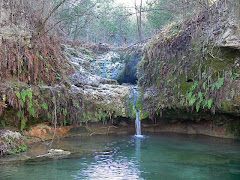
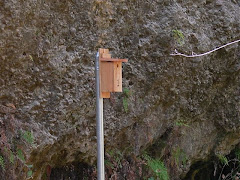
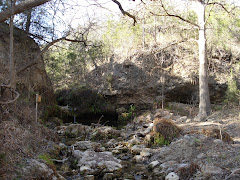
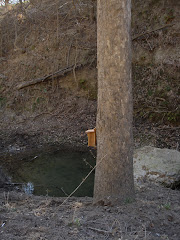
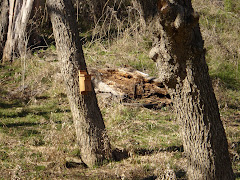




No comments:
Post a Comment